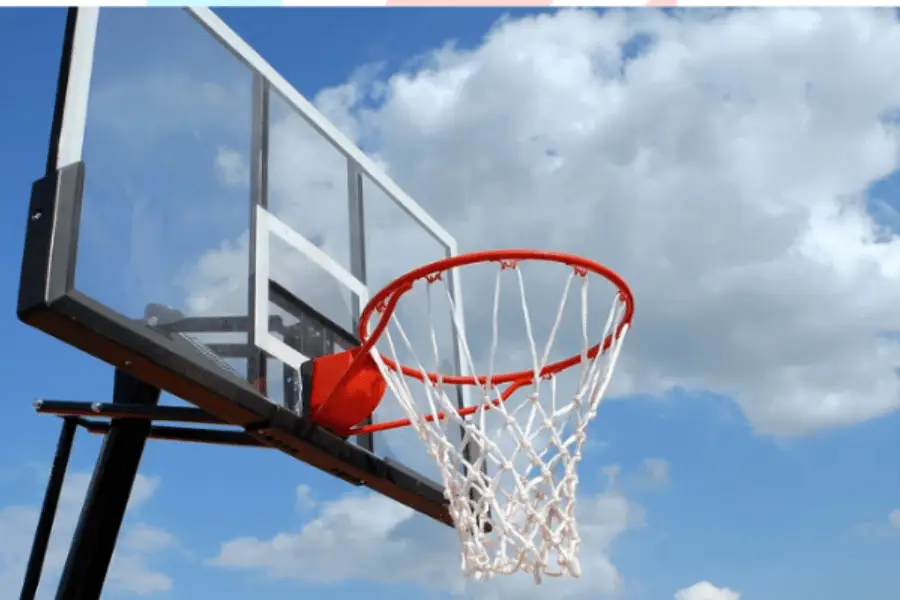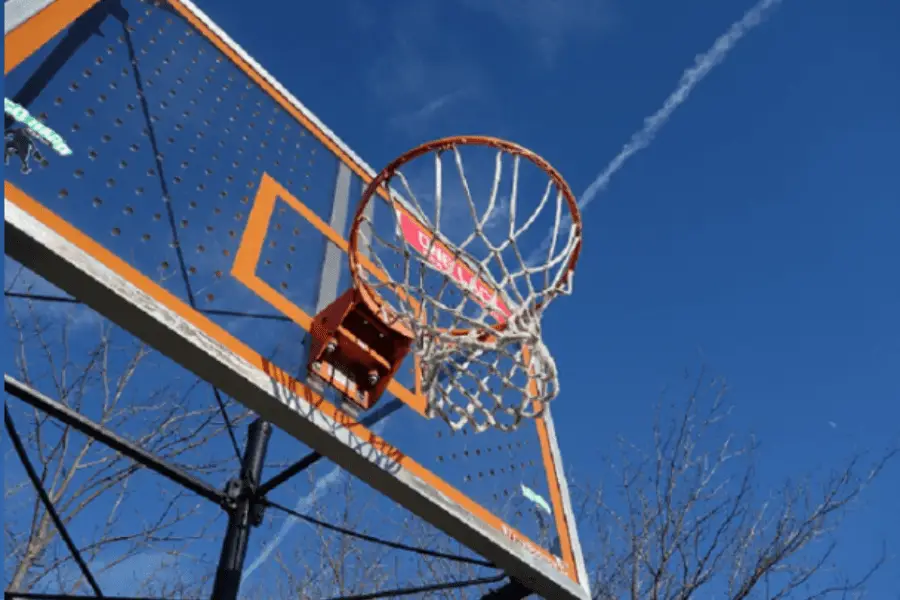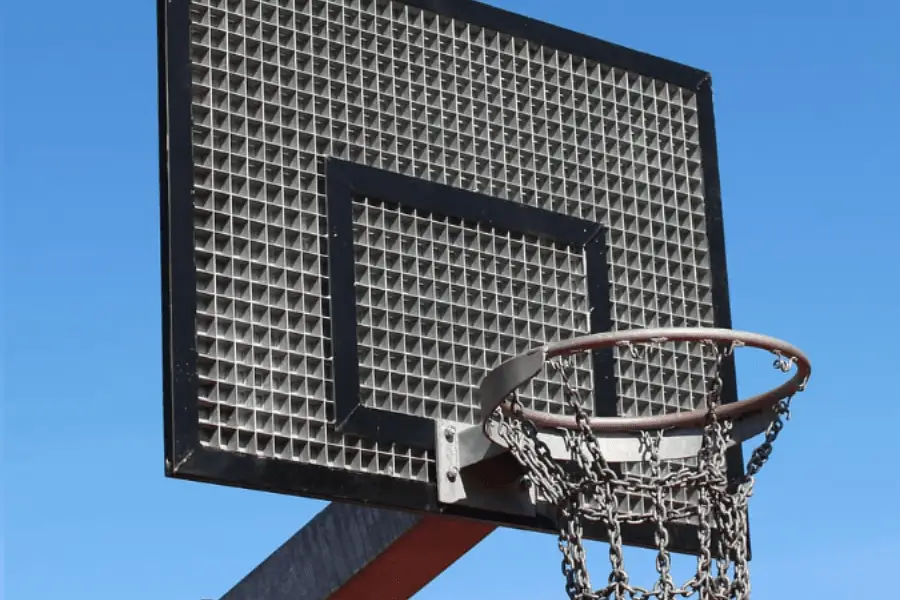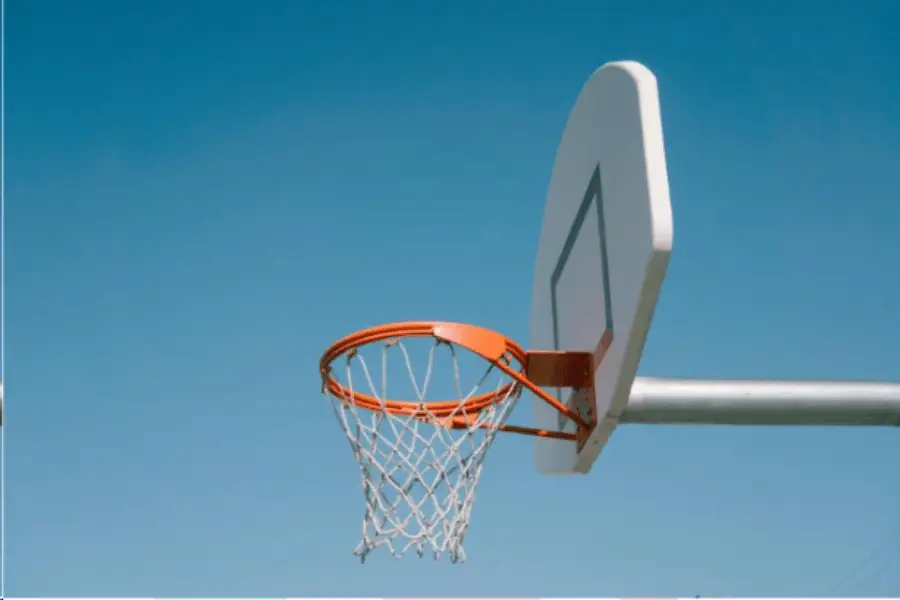Best Basketball Backboard Material: 8 Most Common Types
Ever dreamed of draining a buzzer-beater like your favorite player? It all starts with the right equipment. When it comes to basketball, the backboard plays a crucial role. But with so many materials available, choosing the best basketball backboard material can be confusing.
No sweat! This guide will break it down for you. We’ll assist you in choosing the ideal backboard material!
Best Basketball Backboard Material
Choosing the best basketball backboard material boils down to your preferences, playing style, and even budget. While a glass board rebounds the ball well, an acrylic one is considered the most affordable. Other types, like polycarbonate, fiberglass, or steel, are famous for their durable construction.
Tempered Glass: Best Rebound Performance

Tempered glass is the backboard type the NBA uses for its exceptional rebound performance. The material offers the closest experience to professional courts, so it’s a popular choice among serious players.
The material is constructed using a process that involves heating and rapid cooling. This results in a strong and durable surface. Consequently, it can handle a lot of rough play without getting damaged. Its durability ensures consistent rebounding, allowing players to practice their shots with confidence.
Another advantage is that it gives the ball a true bounce, just as it does on official courts. Therefore, it’s ideal for honing basketball shooting skills and perfecting game-winning shots.
Tempered glass backboards may be more expensive than other materials due to their special manufacturing process and thicker glass. However, they are still a worthwhile investment for serious basketball enthusiasts. Tempered glass is also the material for the NBA’s backboard.
Acrylic: Best Balance Of Durability And Affordability
When comparing glass with acrylic backboards, acrylic shines for those seeking a balance of durability and affordability. These items offer a sturdy surface that can withstand regular use without breaking the bank.
Acrylic’s selling point is its toughness. It’s hard to crack or shatter, perfect for outdoor courts and casual games. Plus, you don’t need to spend much time maintaining it—just set it up and start playing!
Even better, acrylic backboards are about 30% to 50% cheaper than tempered glass or polycarbonate ones. But they still do the job well. That’s why they’re a popular choice for places like schools and parks where budgets can be tight.
Although acrylic might not give you the same bounce as tempered glass, it’s fine for most players. It’s a proper choice for anyone who wants to have fun on the court without costing a fortune.

Polycarbonate: Best Shatterproof Properties
Polycarbonate is a type of strong plastic known for its durability. It’s approximately 30 times tougher than acrylic and about 250 times more durable than glass. That’s why it’s used to make the best basketball backboards.
Additionally, polycarbonate structures can withstand impacts of up to 900 pounds, preventing shattering. When used for basketball backboards, they stay strong for a long time, even when the game gets really intense.
Because these items hardly ever break, they’re great for outdoor courts, schools, and playgrounds where people play rough and the weather can be tough.
In addition to its durability, polycarbonate offers decent rebound performance. In this aspect, it provides players with a more satisfactory playing experience than acrylic. It may not offer the same bounce level as tempered glass. But it still allows for enjoyable gameplay for players of all skill levels.
Wood: Best Classic Aesthetics
Wood, with its visual appeal, is the classic choice for basketball backboards, perfect for fans of the traditional court aesthetics. These backboards bring a luxury feel to any court, indoors or outdoors.
Functionality-wise, they offer a good bounce for casual players, even if it’s not quite as consistent as tempered glass or polycarbonate. Plus, wood is super versatile. You can customize it as you like—the size, the design, whatever fits your court.
Steel: Best Structural Support
When it comes to structural support for basketball backboards, steel reigns supreme. Its exceptional load-bearing capacity ensures the safety and durability of the entire system. This translates to supporting even the heaviest basketball rims without issue.
When there’s a powerful dunk, the force from the impact hits the backboard. But steel can distribute the force better than glass, so it’s less likely to bend or break under that same powerful dunk. This material is better for withstanding those big hits on the basketball court.
Its robustness helps it withstand the rigors of intense play and harsh weather. This results in consistent performance, year after year, regardless of the conditions.
Moreover, steel is resistant to bending, warping, and corrosion, unlike aluminum or plastic. Compared to these alternatives, steel is the superior choice for its long-lasting reliability. This reliability directly equates to a safer and more secure playing experience for players of all levels.
Beyond its durability, steel boasts the advantage of easy installation and maintenance. These structures require minimal upkeep and provide a solid foundation for basketball backboards.

Impact (HDPE): Best Ball Control For Beginners
Are you new to basketball and want to master dribbling? Choose a backboard made of high-density polyethylene (HDPE).
These backboards are super tough and make the ball bounce back slower (limit ball bounce). This helps beginners practice handling the ball without constantly chasing it everywhere.
Plus, HDPE backboards can handle being outside and are easy to put together. That is why they are perfect for home courts or playgrounds.
Fiberglass: Best Combination Of Durability And Flexibility
Fiberglass backboards are well-suited for a variety of playing environments. Their resistance to cracking, warping, and corrosion ensures they can be durable even when experiencing harsh weather conditions. This makes them ideal for outdoor courts and high-traffic areas.
Fiberglass offers slight flexibility, unlike rigid materials like steel or tempered glass. This slight bend acts like a shock absorber, reducing the ball’s impact on the player’s arms and wrists. This flexibility ultimately reduces the risk of injury and enhances the overall gameplay experience.
Furthermore, these backboards are lightweight and easy to install. Their combination of strength, resilience, and versatility makes them perfect for a world for people at all skill levels.

Conclusion
Those are all the ins and outs of the best basketball backboard material. Weigh their pros and cons and consider your budget; you’ll know which material is best for you. If you have any questions, don’t hesitate to contact us. We’ll do our best to provide you with the proper advice.
